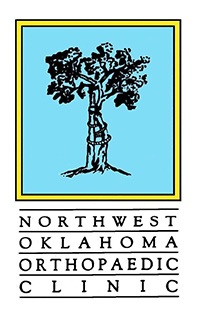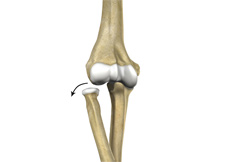Conditions
Elbow Trauma
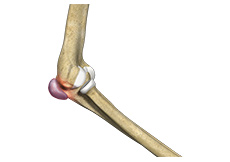
The elbow is a complex joint of the upper limb, formed by the articulation of the long bone of the upper arm or humerus, and the two bones of the forearm - the radius and ulna. It is one of the important joints of the upper limb and is involved in basic movements such as bending and extending the arm and rotating the forearm.
Elbow Arthritis
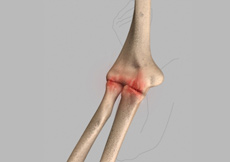
Although the elbows are not weight-bearing joints, they are considered to be most important for the functioning of the upper limbs. Hence, even minor trauma or disease affecting the elbow may cause pain and limit the movements of the upper limbs.
Bicep Tendon Tear at the Elbow
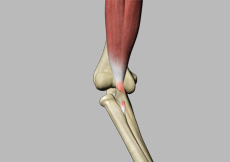
The biceps muscle, located in the front of the upper arm allows you to bend the elbow and rotate the arm. Biceps tendons attach the biceps muscle to the bones in the shoulder and in the elbow. The biceps tendon that attaches the muscle at the elbow is known as the distal biceps tendon.
Elbow Dislocation
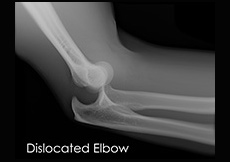
The arm in the human body is made up of three bones that join to form a hinge joint called the elbow. The upper arm bone or humerus connects from the shoulder to the elbow to form the top of the hinge joint. The lower arm or forearm consists of two bones, the radius, and the ulna.
Triceps Tendonitis
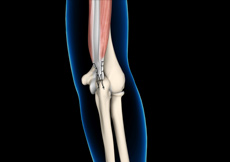
Triceps tendonitis is inflammation of the triceps tendon, the tissue that connects the triceps muscle on the back of the upper arm to the back of the elbow joint, allowing you to straighten your arm back after you have bent it.
Cubital Tunnel Syndrome (Ulnar Nerve Entrapment)
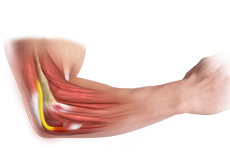
The ulnar nerve travels down the back of the elbow behind a bony bump called the medial epicondyle, and through a passageway called the cubital tunnel. The cubital tunnel is a narrow passageway on the inside of the elbow formed by bone, muscle, and ligaments. The roof of the cubital tunnel is covered with a soft tissue called fascia.
Elbow (Olecranon) Bursitis
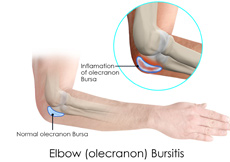
The elbow contains a large, curved, pointy bone at the back called the olecranon, which is covered by the olecranon bursa, a small fluid-filled sac that allows smooth movement between the bone and overlying skin.
Elbow Sprain
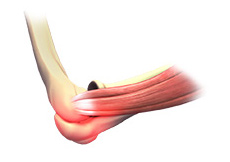
An elbow sprain is an injury to the soft tissues of the elbow. It is caused due to stretching or tearing (partial or full) of the ligaments that support the elbow joint.
Tennis Elbow

Tennis elbow is a common name for the elbow condition lateral epicondylitis. It is an overuse injury that causes inflammation and microtears of the tendons that attach to the lateral epicondyle.
Golfer's Elbow

Golfer’s elbow, also called medial epicondylitis, is a painful condition occurring from repeated muscle contractions in the forearm that leads to inflammation and microtears in the tendons that attach to the medial epicondyle.
Elbow Injuries

Some of the common elbow injuries include: Elbow fractures: Fracture is a common injury to the elbow. Elbow fractures may result from a fall onto an outstretched wrist, direct impact to the elbow or twisting injury.
Little League Elbow
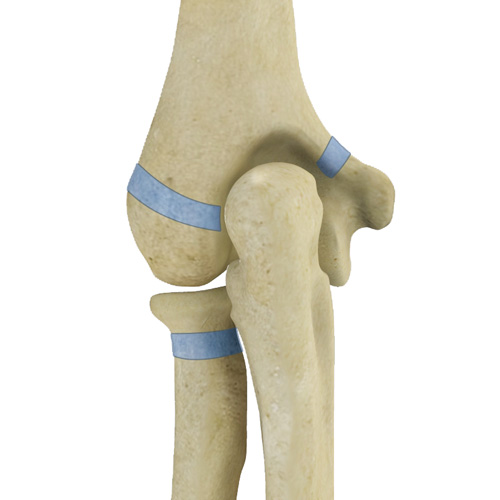
Little league elbow, also called medial apophysitis, is an overuse condition that occurs when there is overstress or injury to the inside portion of the elbow. It is commonly seen in children involved in sports activities that require repetitive throwing such as baseball.
Distal Humerus Fractures of the Elbow
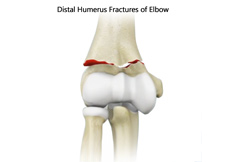
Injury in the distal humerus can cause impairment in the function of the elbow joint. A distal humerus fracture is a rare condition that occurs when there is a break in the lower end of the humerus.
Elbow Fractures in Children
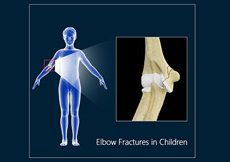
A break in any of the bones that form the elbow is called an elbow fracture.
Radial Head Fractures of the Elbow
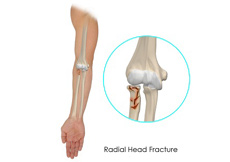
Radial head fractures are very common and occur in almost 20% of acute elbow injuries. Elbow dislocations are generally associated with radial head fractures. Radial head fractures are more common in women than in men and occur more frequently in the age group of 30 to 40 years.
Elbow Fractures
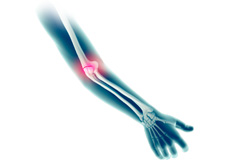
Elbow fractures may occur from trauma, resulting from various reasons: a fall on an outstretched arm, a direct blow to the elbow or an abnormal twist to the joint beyond its functional limit.
Hyperextension Injury of the Elbow
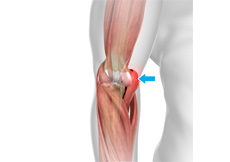
Hyperextension injury of the elbow occurs when the elbow joint is bent beyond its normal range of motion, causing damage to the bones and ligaments of the elbow. It may also cause elbow dislocation. The condition is more common in tennis, football, weight-lifting and contact sports.
Loose Bodies in the Elbow
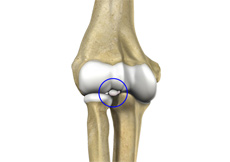
Loose bodies are small loose fragments of cartilage or a piece of bone that floats around the joint. The loose bodies can cause pain, swelling, locking and catching of the joint.
Throwing Injuries

An athlete uses an overhand throw to achieve greater speed and distance. Repeated throwing in sports such as baseball and basketball can place a lot of stress on the joints of the arm, and lead to weakening and ultimately, injury to the structures in the elbow. These overuse injuries may include:
